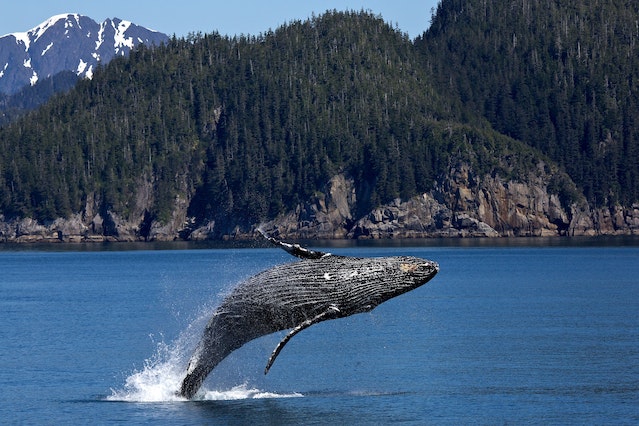
How big and how small can a mammal be? The Etruscan shrew is the smallest mammal and is 40 mm long and weighs 2 g. The blue whale is the largest mammal and is 29.9 m long and weighs 199 tons. The African elephant is the largest land animal and is about 4 m tall and weighs about 10 tons. The tallest mammal that ever lived was the paraceratherium, which is an extinct type of rhino. It probably grew to be 5 m tall at the shoulder and 7.5 meters long. It would have weighed 15 to 20 tons.
What is a mammal? A mammal is a vertebrate animal that produces milk to feed its young, has a neocortex part of its brain, has fur or hair, is warm-blooded, breathes air, and has three inner ear bones. These things separate mammals from the other animal groups. So, why is there nothing smaller than the Etruscan shrew? Why is there nothing larger than the blue whale in the sea and the African elephant on the land?
The main reason mammals can’t be smaller or bigger is down to heat loss. Heat is lost from an animal to the air all the time. Our food is converted into energy, which is used to perform chemical reactions in our cells, and heat is produced. We use this heat to regulate our body temperatures, as mammals. This heat is constantly being lost to the atmosphere because nature always tries to make a balanced system. The molecules in the hot cells in our body have more energy than the molecules in the air around us. The energy from our bodies is transferred to the atmosphere until the two are balanced. This is why if you place a hot cup on a table in a room and a cold up on a table in a room, they will both become the same temperature as the room. Now, the more surface area an animal has, the more skin is exposed to the atmosphere, and the more heat loss can proceed. However, that doesn’t mean that larger animals are cooler than smaller ones.
Animals generate heat in proportion to their body size and they lose heat in proportion to their surface area. The larger the animal, the more heat it will produce. The smaller the animal, the less heat it can produce. The larger the surface area, the more heat can be lost, the smaller the surface area, the less heat can be lost. However, the smaller the animal, the lower the volume to surface area ratio. As an object gets bigger, the volume to surface area ratio goes down. That means an Etruscan shrew has a very high surface area to volume ratio and an African elephant has a very low surface area to volume ratio.
What does that mean? Basically, it means that the Etruscan shrew loses heat far more quickly than it can produce it. To counteract the heat lost it has to have an incredibly high metabolism and it has to constantly eat. If a mammal was any smaller, it would not be able to eat enough to retain any body heat. The opposite is true for the African elephant. It has a very low surface area to volume ratio, so it creates far more heat than it can lose. Those big floppy ears are an attempt to increase its surface area and try to lose more heat. If a mammal was bigger than an African elephant, it wouldn’t be able to lose enough heat and would overheat.
So, heat is the main reason why mammals can’t be bigger or smaller. So, what about the blue whale? It lives in the sea, so presumably heat loss is not a problem. Why isn’t the blue whale bigger? Blue whales are able to get as big as they do because the water gives them buoyancy and takes the weight off their bones and muscles. The main reason that blue whales don’t grow any bigger is because of their food source. Blue whales live on krill, which are like tiny shrimp. Blue whales swim through swarms of krill with their mouths open and filter out about 4 tons of krill every day. They need this to maintain their metabolisms. However, krill are very seasonal, and the blue whales can’t find krill all year round. To cope with this, they put on about half of their body mass in the summer, and then survive the winter with very little food. If they had a more reliable food source, maybe they would be able to grow bigger. Who knows? But the size they are is probably the limit because as a body gets bigger, it becomes more inefficient and harder to maintain. The benefits of size start to become outweighed by the disadvantages. I think we can probably say that if blue whales could be bigger, they already would be. The fact that there are no bigger blue whales means that it is not an evolutionary advantage. And this is what I learned today.
Sources
http://manghammath.com/Chapter%20Packets/Animals%20Day%202.pdf
https://www.tutorialspoint.com/p-why-does-heat-transfer-from-a-hot-body-to-a-cold-body-p
https://www.smithsonianmag.com/science-nature/why-king-kong-should-have-been-blue-whale-180962603/
https://www.smithsonianmag.com/science-nature/why-king-kong-should-have-been-blue-whale-180962603/
https://www.discoverwildlife.com/animal-facts/how-big-or-small-could-animals-get/
